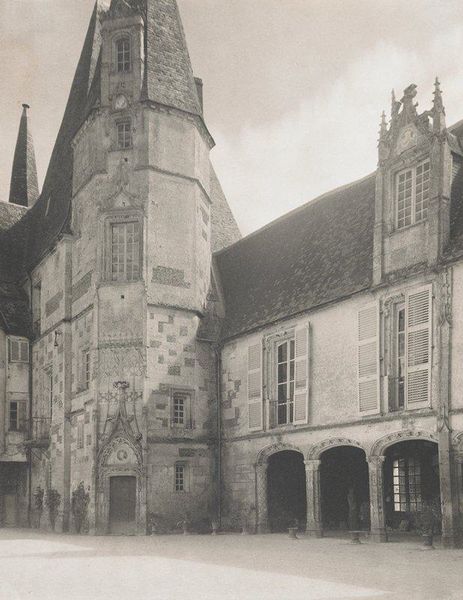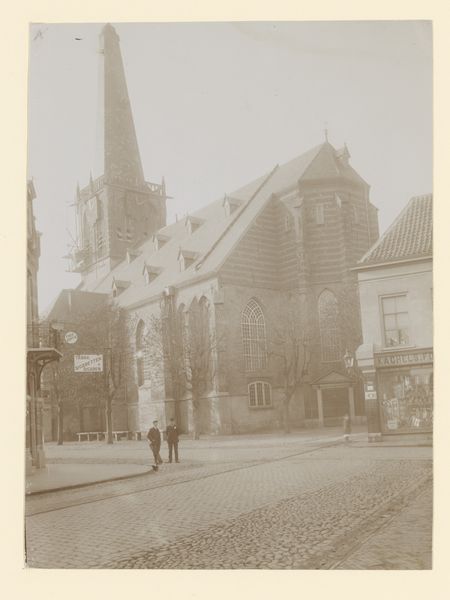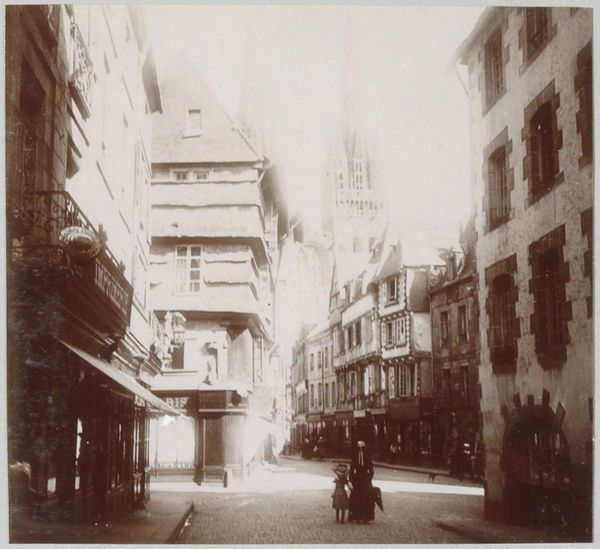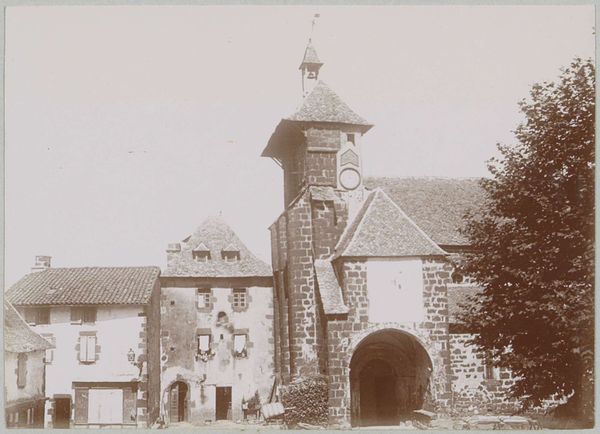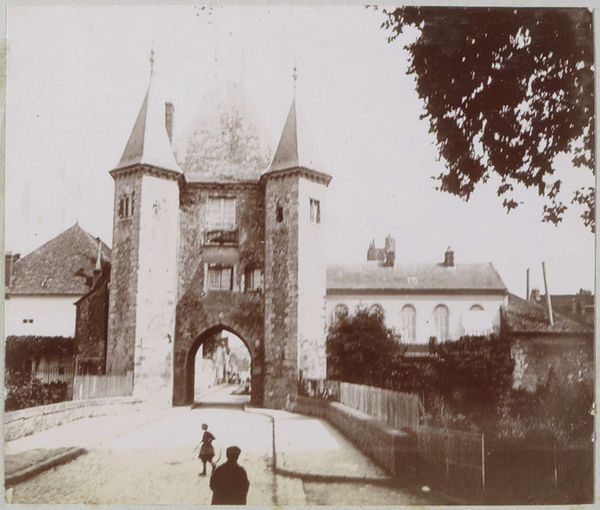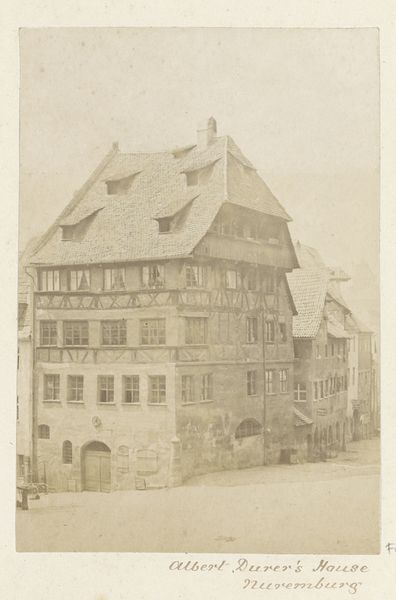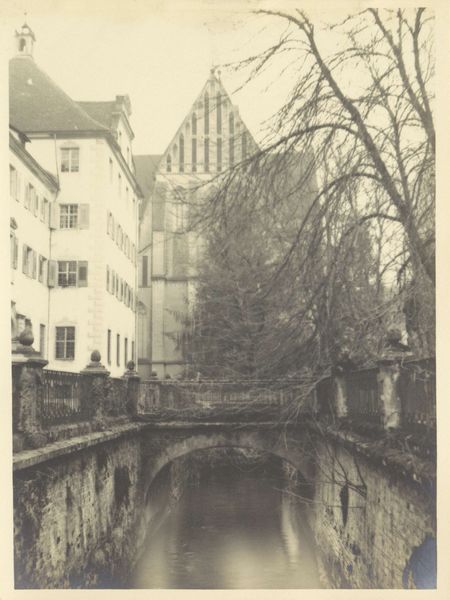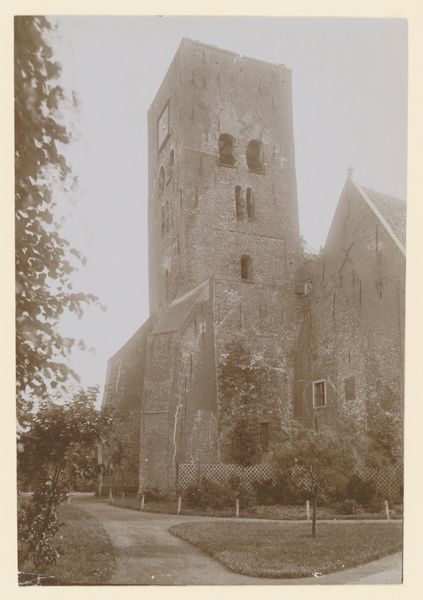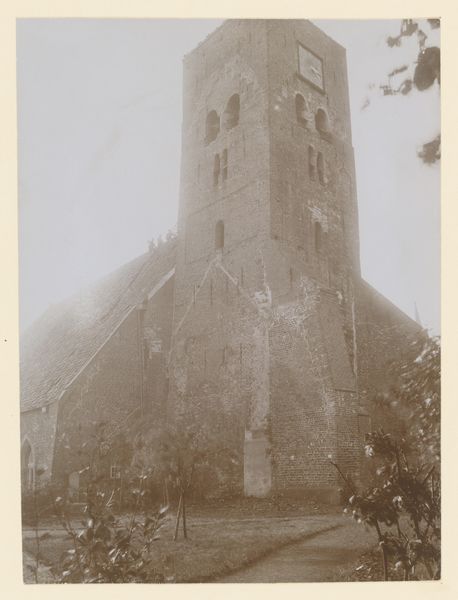
#
film photography
#
wedding photograph
#
photo restoration
#
wedding photography
#
outdoor photograph
#
outdoor photo
#
couple photography
#
monochrome photography
#
photography of branded tshirt
#
public art photography
Dimensions: height 88 mm, width 118 mm
Copyright: Rijks Museum: Open Domain
Curator: Welcome. We're standing before a photograph titled "Gezicht op de Würzburger Tor in Uffenheim," dating back to 1900, housed here at the Rijksmuseum. Editor: It has this beautifully soft, almost dreamlike quality. The buildings lean into the frame, leading the eye towards the Würzburger Tor which, even in the distance, appears quite imposing. Curator: Indeed. Let's consider the photograph's materiality. We see this particular sepia tone and the slight blurring indicative of early photographic processes. What labor and production processes would be necessary to get such a result? How were these early photographs consumed? It evokes a particular sense of nostalgia, but one must remember that for those in 1900, this would have been new and potentially quite miraculous technology. Editor: And it begs the question, doesn't it, who was commissioning such images? What role did photography play in constructing the image of cities and regions at the time? Was this for documentation, for tourism, or something else entirely? You see the architecture is very regional. This isn't the product of some globalized, mass production, which in turn must shape local social dynamics of identity and presentation. Curator: Exactly. And who chose this angle? It's a very specific framing of the town. Is the photographer consciously employing a romantic ideal of the German townscape, reinforcing certain power structures or social narratives? How does its later adoption as a heritage symbol impact our view of that early intention and use? Editor: You’re right. This image and its framing of the town invites speculation about its public and institutional purpose. Did its inclusion in public collections cement its status? And how does the public’s reception of this work—perhaps different now than in 1900—continue to reshape its historical importance and societal significance? It all points to the constructed nature of even seemingly straightforward representations of reality. Curator: It's been interesting to peel back some of these layers. Seeing it now has highlighted the blend of art, science, and socio-political context that shaped its creation. Editor: And I think it highlights how even an unassuming image like this speaks volumes about the past and present conditions that gave it form, and in turn what meanings the future viewer will give to it.
Comments
No comments
Be the first to comment and join the conversation on the ultimate creative platform.

